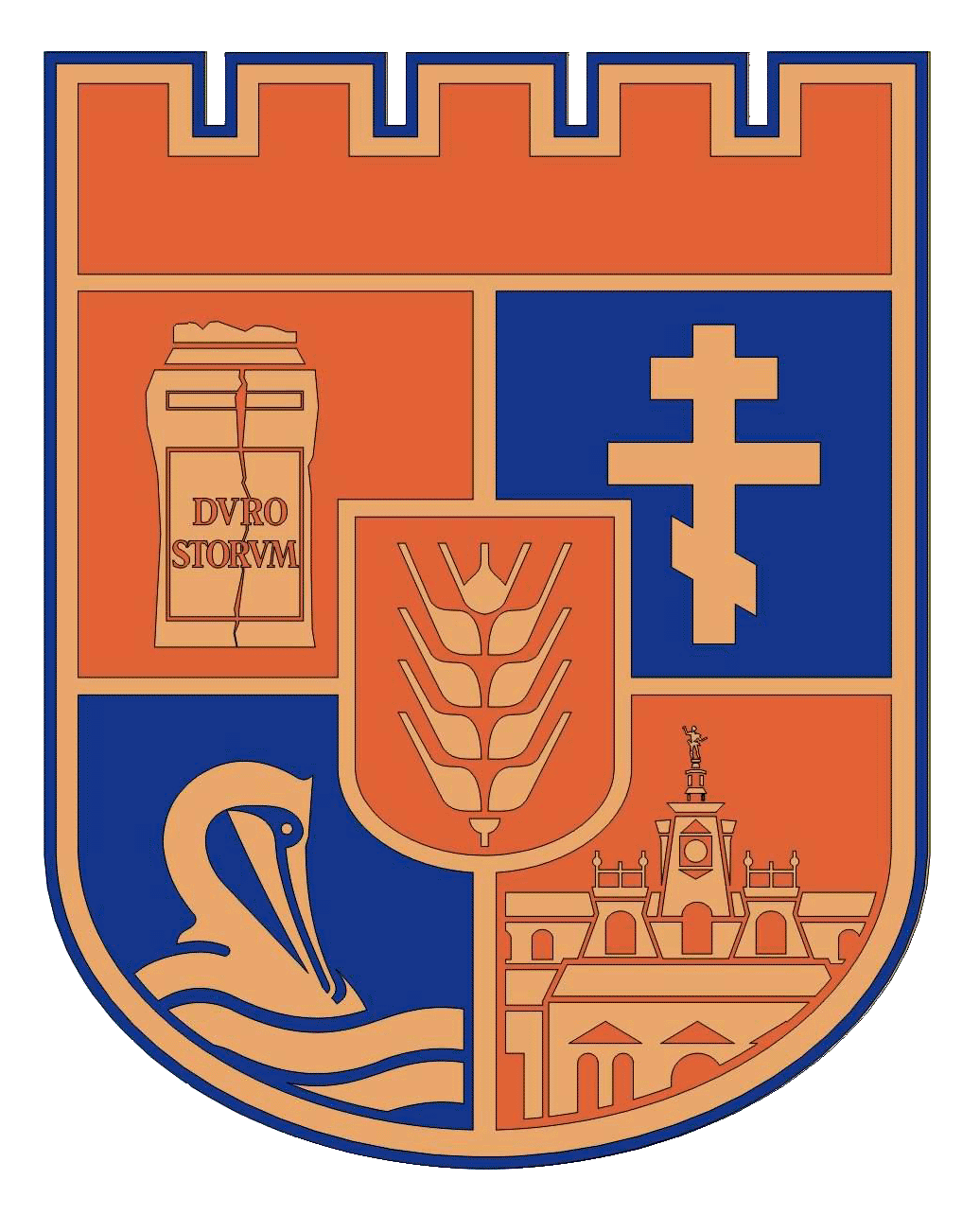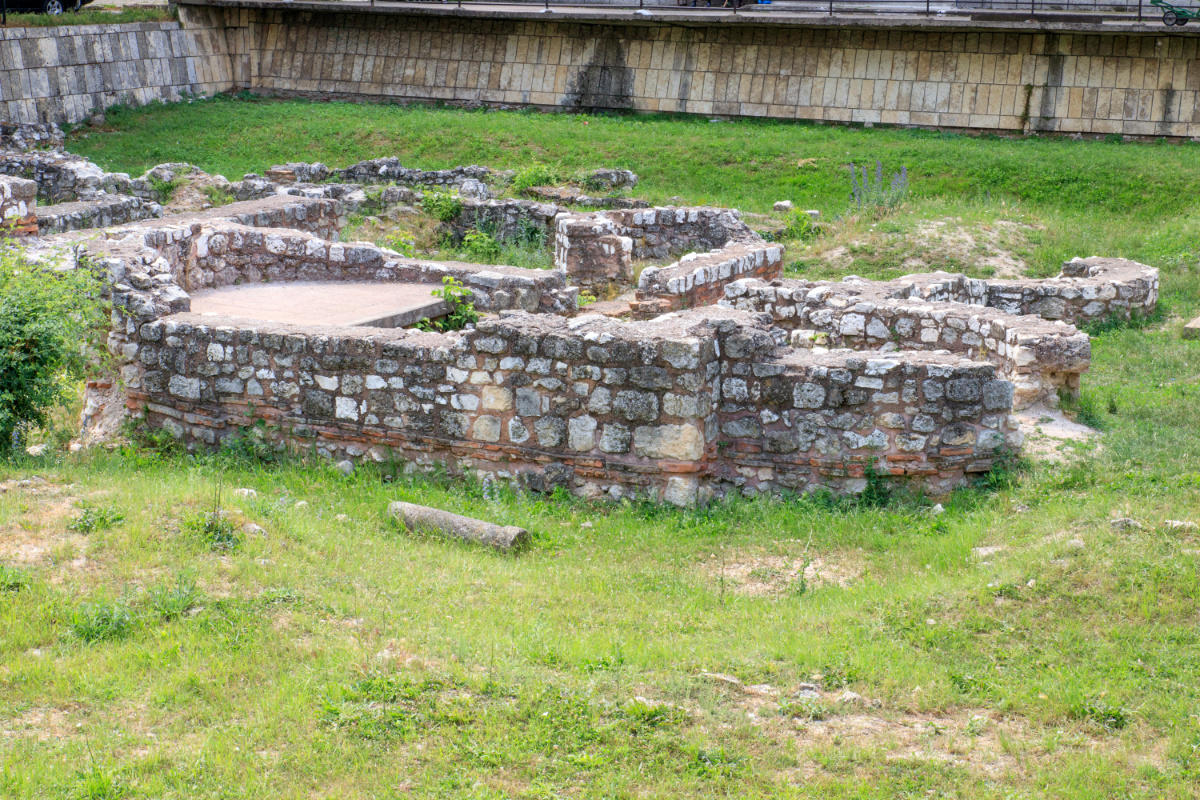Episcopal Palace from the end of the IV-VI c.
Category CastleLOCATION
The Episcopal Palace from the end of the IV-VI c.is located in the central part of the town of Silistra, Silistra municipality, next to the RDVR building. The town is 429 km away from the capital Sofia. There is a bus three times a day leaving from the Sofia Central Bus Station to Silistra, as well as a train three times a day from the Sofia Central Railway Station.
DESCRIPTION
The Episcopal Palace from the end of IV-VI was the residence of the first Bulgarian bishops. Approximately in the center of the residential quarters a large urban villa with underfloor heating was erected in the 2nd-3rd century which was probably the residence of the governors / prefects of the province of Moesia, whose capital is Durostorum.
HISTORY
In late antiquity (IV - VI century) Dorostol (this is the new Greek name) became the center of Christianity and Christian culture. Between 303 and 307, there were 12 early Christian saints who died a martyr death - St. Dasius St. Maximus, St. Dada, St. Quintinian, St. Ishiah, St. Pisikrat, St. Valentin, St. Kalinik and others. The sarcophagus with the relics of St. Dasius is kept today in the cathedral of Ancona in Italy. In this paleochristian heritage, quite naturally, an Episcopal Department was founded in Durostorum in the second half of the 4th century. The beginning of the fortification of the Danube coast in Silistra is connected with the large construction program of Emperor Diocletian on the territory of the river. Two inscriptions give details for that time. The first, dated around 302, mentions that the fortress of Durostorum, probably the Claudius Legion, was restored and the city is restored too. This reinforcement can be related to the construction of the castel on the Danube coast. The Vetren inscription, dated 297, confirms an ambitious building program for the strengthening of the Durostorum region during Emperor Diocletian. The main factor for clarifying the history of the fortification facility on the Danube bank in Durostorum, however, is the archaeological research that began in 1969 and continued with small interruptions to this day.
During the 5th-6th centuries, different techniques of construction with red masonry of crushed brick existed, but another similar in its uniqueness to that in Durostorum is not known. Similar are those of the fortifications in Serdika and Thessaloniki, as well as the walls of the Acropolis of Philippopolis. The advantages of walls with brick housings and stone plinths are applied to the full extent of the Dorostol castelo.[1]
With the restoration of the town at the end of the 4th century, an impressive massive 17 x 20 m public building was erected on the ruins, with an official hall complemented by an apse and side rooms. The plan of this public building follows the architectural and construction principles of the residences of the city governors and bishops from the 4th to the 6th centuries. A great episcopal basilica from the 4th to the 6th century was explored in the west. It is assumed that this is the palace of the Dorostol bishops. A small private bathroom of the same period was discovered west of the residence. The first bishop of the Early Christian Durostorum-Silistra is Avksentius - Mercury. He headed the Durostorum Department in the year 383, then moved to Medalanum, Milan, and became bishop of the great Italian city at the end of the 4th century. During the 5th and 6th centuries the heirs of the bishop, Jacob, Monophilos, John and Dulcisimus lived there.[2]
Professor Georgi Atanasov describes the building as a three-nave with massive walls, about 1 m wide with a total width of 14 m. At its height, through two towers, the palace lies on the northern fortress wall of Drustar. It is similar to the Omurtag palaces in Pliska and the Aula near the Khan Krum village, and almost identical to the Omurtag Aula in Preslav. It is better known as an archbishop's palace from the 10th century, but Prof. R. Rashev noticed that there was an earlier period that connected with the pagan period. The palaces in Drastar and Preslav are complemented in a unique way. In length, the Drastar Palace has not been investigated, and more archaeological excavations are required. The Preslav palace was supposed to have been about 25 m long with four towers on each corner, but only those looking to the Danube have been studied.[3] The presence of a large religious center is illustrated by the extensive Episcopal Basilica. The church was discovered during archaeological studies in 2004 - 2005 in front of the Police Building, in the center of the ancient Durostorum. It is a three-nave one-apse basilica with narthex and atrium, with a total length of 32,80 m.
There are problems with the dating of the complex so represented, because the remain underground material is insufficient. A coin made by Constantine the Great (307-337) in the foundations suggests that the construction was at its earliest since the beginning of the 4th century, but exactly when it is difficult to specify. According to systemic archaeological studies of the neighboring basilica and the distinct vertical stratigraphy, it can be assumed that the ancient villa was destroyed during the unfortunate war of Valent with the Goths in 376-379 when the city suffered heavily. In this sense, the new building was erected at the end of the 4th century or when Dorostol returned after the Hunan Invasion in the middle of the 5th century. As for the upper boundary of the settlement, the additional buildings, annexes and a wall of fence south of the street, which always conforms to the original plan, suggests that it operated at least until the capture of Dorostol by the Avars and Slavs at the end of the 6th century. In this sense, the demolition of the building coincided with the burning of the neighboring basilica. Even at the site's primary publication, the investigator P. Donevski suggests that it is a public building, but it fails to determine its purpose. After the basilica, whose apses are probably about 80 m from the bathroom, is revealed, I do not exclude the possibility that the two public buildings are interconnected and conditioned by one another. Moreover, it turns out to be burned at the same time. Finally, it can`t be underestimated the fact that both buildings are built in the same opus mixtum, coinciding with the number of brick rows and mortar used. In this sequence, it is suggested that the complex, including the large public building with a large hall and an apse, as well as the adjoining bathroom, is the residence of the Dorostol bishops of IV-VI c.[4]
SITE SIGNIFICANCE
The site is important archeological object because it is considered to be the residence of the first Bulgarian bishops.
VISITOR INFORMATION
The remains of the palace are located outside and are free to visit.
SITE CLASSIFICATION
Archaeological religious site
[1] Academia.edu.<http://www.academia.edu/8787658/%D0%A0%D0%B8%D0%BC%D0%BE-%D0%B2%D0%B8%D0%B7%D0%B0%D0%BD%D1%82%D0%B8%D0%B9%D1%81%D0%BA%D0%B8%D1%8F_%D0%BA%D0%B0%D1%81%D1%82%D0%B5%D0%BB_%D0%BD%D0%B0_%D0%94%D1%83%D1%80%D0%BE%D1%81%D1%82%D0%BE%D1%80%D1%83%D0%BC-%D0%94%D0%BE%D1%80%D0%BE%D1%81%D1%82%D0%BE%D0%BB_%D0%B2%D1%8A%D1%80%D1%85%D1%83_%D0%94%D1%83%D0%BD%D0%B0%D0%B2%D1%81%D0%BA%D0%B8%D1%8F_%D0%B1%D1%80%D1%8F%D0%B3_%D0%B2_%D0%A1%D0%B8%D0%BB%D0%B8%D1%81%D1%82%D1%80%D0%B0_The_Roman-Byzantine_castellum_of_Durostorum_Dorostol_on_the_bank_of_the_Danube_in_Silistra_._%D0%90%D1%80%D1%85%D0%B5%D0%BE%D0%BB%D0%BE%D0%B3%D0%B8%D1%8F_1_2013_c._52-70> (24.04.2018)
[2] Mediapool.bg, 13 окт. 2003 <http://www.mediapool.bg/sinodat-izprashta-90-godishen-vladika-za-mitropolit-na-silistra-news23199.html> (24.04.2018)
[3] Actualno.com. <https://www.actualno.com/chronicles/prof-g-atanasov-za-actualnocom-ochakvam-sydejstvie-za-razkrivane-i-konservirane-na-dvoreca-na-han-omurtag-news_409098.html> (24.04.2018)
[4] Ivanov, Rumen; Atanasov, Georgi; Donevski, Peti. The Ancient Durostorum 1st book . Silistra, Kovachev, 2006, p. 342-343.




